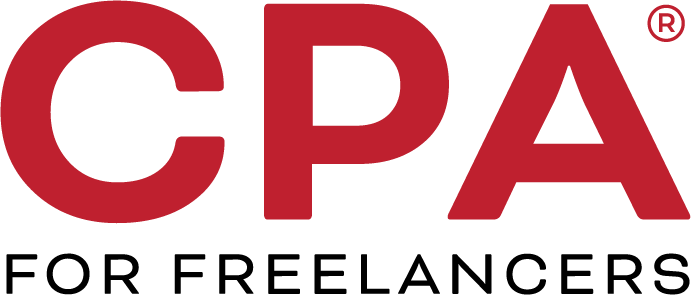As much as we all love working, the thought of retiring some day is also quite attractive. As a freelancer, your retirement savings are entirely in your hands, so you need to take every opportunity to save as much as you can. In 2019, thanks to some new cost of living adjustments to dollar limitations for pension plans and other retirement-related items from the Internal Revenue Service (IRS), you’ll be able to put away a little more money tax-free.
Here’s an overview of the changes that are likely to impact most freelancers for the 2019 tax year and beyond:
- If you are a W-2 employee as well as a freelancer, there is a $500 bump up in the contribution limit for employees who participate in 401(k), 403(b), most 457 plans, and the federal government’s Thrift Savings Plan. The increase goes from $18,500 to $19,000.
- It’s been nearly six years since there was an increase in the annual limits on contributions to an IRA. In 2019 we will finally see an increase from $5,500 to $6,000. There is not an increase in additional catch-up contribution limits for individuals aged 50 and over—it remains $1,000.
- An important point for freelancers: There are increases in the income ranges for determining eligibility to make deductible contributions to traditional Individual Retirement Accounts (IRAs), to contribute to Roth IRAs and to claim the saver’s credit. The increases are detailed here:
To deduct contributions to a traditional IRA certain conditions must be met. If you are a single freelancer without an employer-sponsored retirement plan, then you likely don’t need to worry about the phase-out limits (although checking with a tax professional is a good idea). However, if you are single or married and during the year either you or your spouse was covered by a retirement plan at work, your eligible deductions may be reduced until it is eliminated, depending on your filing status and income.
Here are the traditional IRA phase-out ranges for 2019:
- For single taxpayers covered by a workplace retirement plan: $64,000 to $74,000, up from $63,000 to $73,000.
- For married couples filing jointly, where the spouse making the IRA contribution is covered by a workplace retirement plan: $103,000 to $123,000, up from $101,000 to $121,000.
- For an IRA contributor who is not covered by a workplace retirement plan and is married to someone who is covered, the deduction is phased out at $193,000 and $203,000, up from $189,000 and $199,000.
- For a married individual filing a separate return who is covered by a workplace retirement plan, there is no adjustment. The phase out remains $0 to $10,000.
- If you are making contributions to a Roth IRA the phase out ranges are: $122,000 to $137,000 for singles and heads of household, up from $120,000 to $135,000. For married
Here are the Roth IRA phase-out ranges for 2019:
- For couples filing jointly, the income phase-out range is $193,000 to $203,000, up from $189,000 to $199,000.
- There is no change to the phase-out range for a married individual filing a separate return who makes contributions to a Roth IRA. It remains $0 to $10,000.
If your total taxable income falls into the IRS’s low- and moderate-income ranges you may be eligible for the Saver’s Credit (also known as the Retirement Savings Contributions Credit). The ranges to qualify are as follows: $64,000 for married couples filing jointly, up from $63,000; $48,000 for heads of household, up from $47,250; and $32,000 for singles and married individuals filing separately, up from $31,500.
Freelancers with employees, beware of important changes to retirement benefit plans
For those self-employed freelancers who own businesses with employees, there are several changes to the tax rules regarding retirement benefit plans that you should discuss with a tax professional. Most notably increases in the dollar limits for:
- Defined contribution plans from $55,000 to $56,000.
- The exclusion for elective deferrals from $18,500 to $19,000.
- The annual compensation limit from $275,000 to $280,000.
- The definition of a key employee in a top-heavy plan from $175,000 to $180,000.
- The definition of a highly compensated employee from $120,000 to $125,000.
As you can see, there are a plethora of changes to the tax rules for retirement contribution limits and deduction thresholds in 2019 that will affect freelancers who are self-employed. For those who also hold down a W-2 job, there are other retirement contribution tax rules which remain unchanged, including the $6,000 catch-up contribution limit for individuals who are employees aged 50 and over participating in 401(k), 403(b), most 457 plans and the federal government’s Thrift Savings Plan. The dollar limitation for catch-up contributions to an employer plan for individuals aged 50 or over remains unchanged at $3,000.
Check in with a tax professional to keep your freelance retirement saving on track.
If you are dreaming of your retirement from the freelance world, and especially if you still have a few decades before it becomes a reality, it is imperative to make sure you are saving enough. While the increases in contribution limits that have just been announced by the IRS may seem modest, as you are likely well aware, over time they can make a big difference in the size of your nest egg. Make sure you check in with your tax professional to ensure you are doing all you can to one day enjoy the freedom from freelance work that you so rightly deserve.


